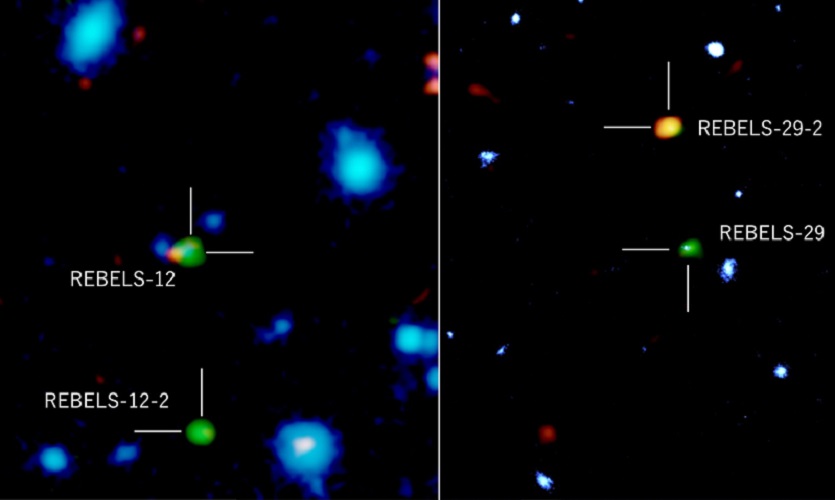Discovery of 'invisible' galaxies deep in Space

The discovery of ‘invisible’ galaxies billions of light years from Earth is helping us understand the origins of the Universe, say astrophysicists.
A new study published in Nature suggests scientists have been missing up to one out of every five galaxies in the early Universe because of this ‘blind spot'.
An international research collaboration called REBELS, involving LJMU’s Astrophysics Research Institute, stumbled upon the invisible galaxies by accident.
Dr Renske Smit, at LJMU, said: ''This discovery was so unexpected, we designed a survey to study some of the most distant galaxies known, and suddenly these invisible 'neighbours' showed up!
“Now that we have found these galaxies, we believe many more invisible galaxies could exist in the early Universe!"
'Unexpected clouds'
The team were aiming to make precise measurements of how long light had been travelling from distant galaxies using the Atacama Large Millimeter/submillimeter Array (ALMA) telescope.
While looking at dark, apparently empty patches of space, they spotted unexpected emissions coming from two hitherto undiscovered galaxies heavily obscured by cosmic dust.
“These new galaxies – named Rebels 29-2 and 12-2 - were missed not because they are extremely rare, but only because they are completely dust-obscured,” explained team member Yoshinobu Fudamoto from Waseba University, Japan.
Over the past decades, observations of distant galaxies - which are characterized by electromagnetic emissions that become strongly redshifted - has mostly relied on observations with the Hubble Space Telescope and large ground-based telescopes, which probe their ultra-violet (UV) emission.
However, astronomers have started to use the unique capability of ALMA which works at submillimeter wavelengths and avoids the problem of dust absorbing UV emission.
Formation of planets
Added Dr Smit: “We don’t exactly understand why cosmic dust is there, especially so early in the Universe, although it is usually present when heavy elements have formed - the materials needed to form planets.
“It is an interesting challenge to our thinking about how the early galaxies were formed and in turn that will help us understand where we are standing today.”
- This research is published as Yoshinobu Fudamoto et al. “Normal, Dust-Obscured Galaxies in the Epoch of Reionization” in the journal Nature on September 22, 2021.


